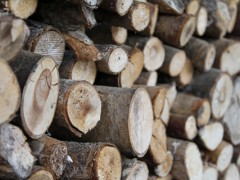The Brick Township Council narrowly approved the introduction of a new ordinance regulating the storage of firewood on residential properties in town.
The ordinance, first proposed in September, was re-introduced Monday night. The re-introduction came after some residents voiced concerns over the initial ordinance, which they said was too intrusive and would prevent them from being able to use their fireplaces all winter long. The ordinance was first proposed after it was found that township officials had no recourse against residents using their properties to commercially cut and sell firewood, which caused quality-of-life issues for neighbors due to chain saws continuously running and large stores of wood up against property lines.
“I spoke with a lot of people on both sides,” said Council President Paul Mummolo. “The reason for this ordinance is not to stop people from burning firewood in their houses. That’s the last thing we want to do.”
|
|
The ordinance was simplified and two major areas of concern were addressed. Instead of the initially-proposed maximum of two cords of wood that would have been allowed to be stored on a residential property, five cords will be allowed under the new proposed ordinance. In the original proposal, firewood would have had to be stacked no less than three feet from a property line; that has been modified to one foot from a property line.
“This way, there’s no wood leaning on the neighbor’s fence,” Mummolo said.
Two council members, Bob Moore and Susan Lydecker, were absent from the meeting, leaving five eligible to vote. Ultimately, the introduction of the ordinance passed in a 3-2 vote, with Mummolo, and council members Jim Fozman and Andrea Zapcic voting in favor of the ordinance. Council members Heather DeJong and Marianna Pontoriero voted against the ordinance.
“The intent of this ordinance is not to create the firewood police,” Zapcic said. “Our code enforcement officers are not going to be dispatched all over the town counting the logs on people’s porches.”
Monday’s vote represents the first reading of the ordinance. It requires a public hearing and second vote – which will occur at the council’s next meeting – before becoming law.












